Exclusive: Inside the nuclear-powered submarine at the centre of the controversial AUKUS deal
Like a whale breaching, this steel monster, powered by a nuclear reactor and loaded to the hilt with deadly torpedoes and missiles, somehow has a majestic elegance about her, as she dives and disappears without a trace, undetectable to friend or foe.
WATCH THE FULL EPISODE ON 9NOW HERE
Onboard the USS North Carolina, diving is one of the most exciting operations. The elite crew of around 130 US Naval officers and sailors man their posts, barking commands as sea water gurgles up over the periscope screen until we are submerged in the silent deep.
The crew is made up of some of the sharpest minds in the military; engineers, nuclear scientists, and weapons experts.
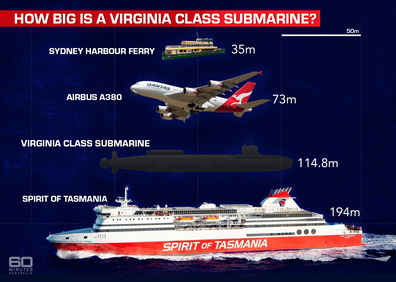
Most of what goes on here is highly classified, but we've been given unprecedented, and quite extraordinary access in order to find out why the Australian Government has committed hundreds of billions of dollars to buy and build Virginia Class submarines.
READ MORE: The USS North Carolina
We board at sea with the help of Coast Guard and Water Police boats. It's a dangerous and particularly ungraceful process of leaping from a small tender boat to a rope ladder hanging down the side of the enormous sub. Half a dozen crew members are standing by, responsible for getting us on safely, including a Navy diver clutching a pair of flippers and a broomstick.
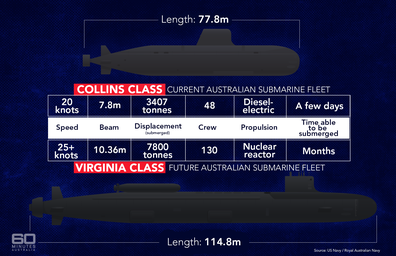
Below the hatch is a maze of narrow ladders, connecting three floors of cramped corridors covered in cables and pipes and machinery.
'It's hard to fathom the missions this tight knit crew face, and the conditions under which they serve for months on end. And there's no doubt Australian sailors have a huge transition ahead in training to operate and maintain these impressive attack boats'
Every inch of space is used. Tins of food and medical supplies are crammed behind the cupboards and in between machinery cabling. The tiny "office" where the Chief of Boat works is packed with batteries and tubes to launch small torpedoes out of, in the event the boat comes under fire.
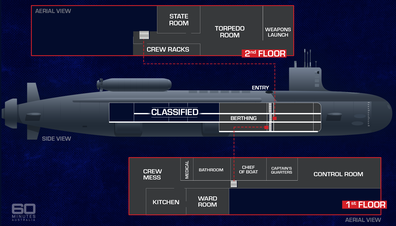
Opposite the impressive torpedoes are racks where sailors sleep in floor to ceiling shelves like sardines. They're surrounded by deadly weapons; the boat can carry a dozen Tomahawk missiles and up to 30 torpedoes.
The Weapons Officer shows me the keys to the torpedo tube, which he carries around with him at all times, dangling from a Mario Kart keyring to remind him of his daughter back home.

The torpedo room is impressive – and confronting - but what gives these subs the biggest advantage at sea is their ability to be undetectable when underwater. And thanks to the nuclear reactor onboard, they make their own air and water, so they really only have to surface if they run out of food and supplies. Which means the USS North Carolina can remain submerged for at least three months at a time.

After a night in the racks, I'm quietly relieved we won't be onboard for that long. Although, the food is surprisingly delicious. Maintaining crew morale in these conditions is crucial, so submarine cooks are renowned for serving up some of the best meals in the US Navy.
During our stay we enjoyed cooked breakfasts, fresh chicken wraps and fried potatoes, freshly baked pastries, cookie bars, and a pizza and movie night. There's even a soft serve machine in the crew mess.
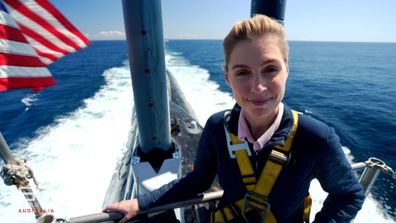
It's hard to fathom the missions this tight knit crew face, and the conditions under which they serve for months on end. And there's no doubt Australian sailors have a huge transition ahead in training to operate and maintain these impressive attack boats.
The Australian government has ordered between three and five Virginia Class submarines from the United States, to hit the water from the early 2030s. Then we'll be working with America and the UK to build our own new design in the 2040's to complete the fleet.
There are plenty of concerns and questions around the timeline; the capacity of the industrial base – here and in America – to fulfil the deal; as well as legislative hurdles with sharing nuclear technology between countries.
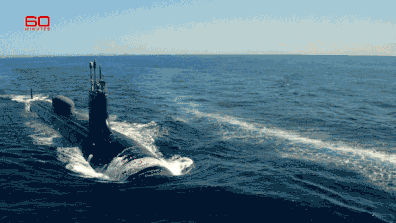
Then there's the staggering cost to Australian taxpayers, an estimated $368 billion over thirty years. Australia's defence minister Richard Marles is adamant the cost is justified, and necessary to counter China's aggression in our region.
On the bridge of the USS North Carolina, the highest point on the submarine, the power of the boat churning along, waves crashing over the bow, is breath-taking. It's hard to reconcile that something so spectacular has such a sinister role, in patrolling our waters.
For Captain Tad Robbins, it's the best view in the world.
"Australia has made a good investment, yes ma'am" he tells me over the roar of the boat.
"This is the most capable submarine in the world. So we're excited to work with Australia in this venture. I think the whole country should be excited."
Auto news: Pedestrian caught setting McLaren on fire.

Come Take a Tour of America's Newest Nuclear Submarine
PCU South Dakota will join the U.S. Navy submarine force in February 2019.

The soon-to-be USS South Dakota looks brand spanking new both outside and inside in a new video posted to YouTube. The clip will take you on a guided tour of the submarine, which is the 17th Virginia -class nuclear attack submarine built for the U.S. Navy and will join the service in February.
In addition to the torpedoes, South Dakota packs a powerful cruise missile punch. Virginia- class vessels are now constructed with two Multiple All Up Round Canisters (MACs) built into the bow of the submarine. The video clearly shows the large round door belonging to one of the MACs, underneath each of which is six ready-to-fire Tomahawk cruise missiles, for a total of twelve cruise missiles per boat. Also new to South Dakota is a new, cheaper Large Aperture Bow sonar array in place of a traditional spherical sonar array.
South Dakota is spotless on the inside, with an all-new interior. Wood facades break up the monotony of green and stainless steel on doors and paneling. The galley shows a variety of wild animals (including the posterior of a mountain goat) that are presumably native to the Mount Rushmore State. The submarine incorporates color touch-screen controls at the diving station.
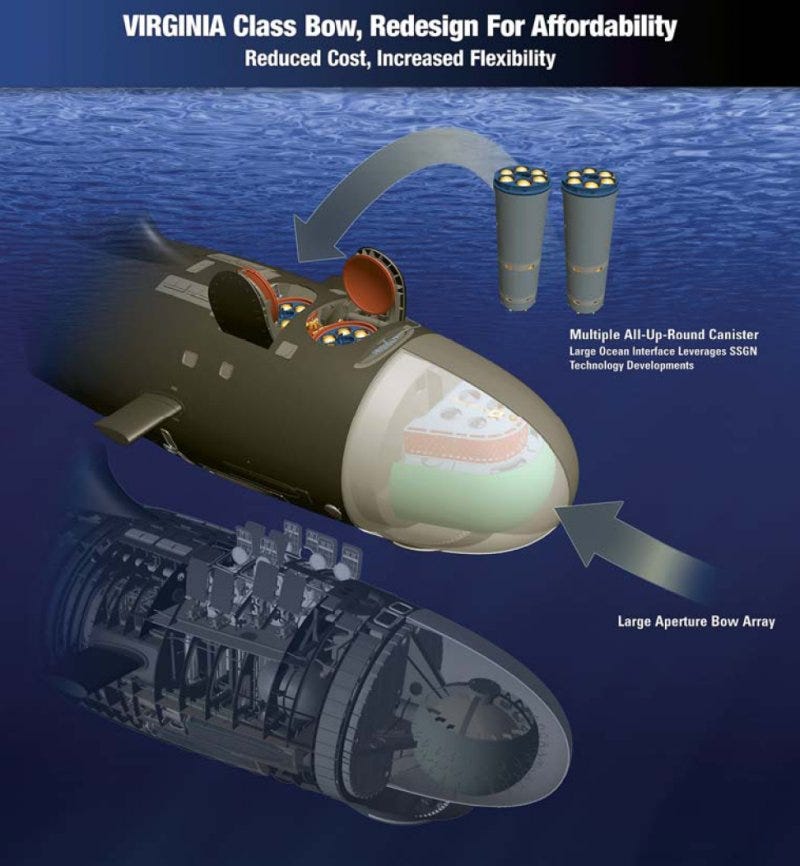
Crew living quarters look smartly designed but would pose a serious problem for claustrophobes. One set of living quarters appears to have four bunk beds, and the aisle between them is only about as wide as a person. Crews appear to have one large and one smaller locker and only a blue curtain for privacy.
Halfway through the video, the focus shifts to a dive test off the East Coast. The submarine is recorded in 1,805 fathoms of water, or 8,310 feet, and makes a test dive. The Virginia class’ maximum operating depth is unknown.

South Dakota is currently scheduled to be commissioned on February 2 at Electric Boat shipyards in Groton, Connecticut. Per Navy policy, she is currently Pre-Commissioning Unit (PCU) South Dakota and will take the United States Ship (USS) title after the commissioning ceremony.

Kyle Mizokami is a writer on defense and security issues and has been at Popular Mechanics since 2015. If it involves explosions or projectiles, he's generally in favor of it. Kyle’s articles have appeared at The Daily Beast, U.S. Naval Institute News, The Diplomat, Foreign Policy, Combat Aircraft Monthly, VICE News , and others. He lives in San Francisco.

.css-cuqpxl:before{padding-right:0.3125rem;content:'//';display:inline;} Naval Vessels .css-xtujxj:before{padding-left:0.3125rem;content:'//';display:inline;}

The Navy's New Frigates Are Behind Schedule

China Could Rule the Seas With This New Tech

This Is the Most Lethal Submarine in the Sea
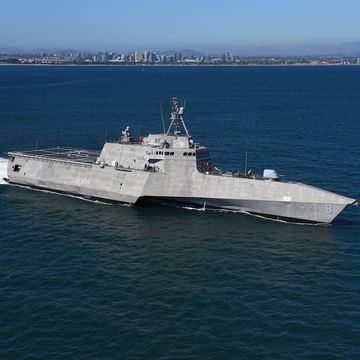
The US Navy Wants to Get Rid of These Ships ASAP
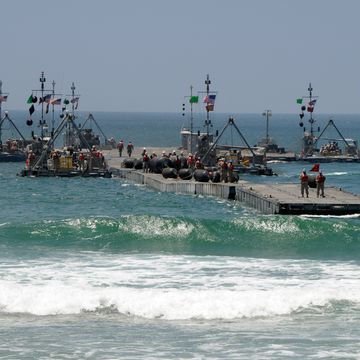
The Army is Sailing to Build a Port off Gaza
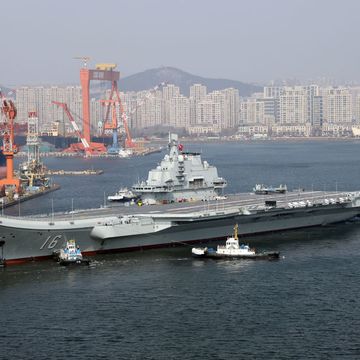
China Confirms it is Building 4th Aircraft Carrier
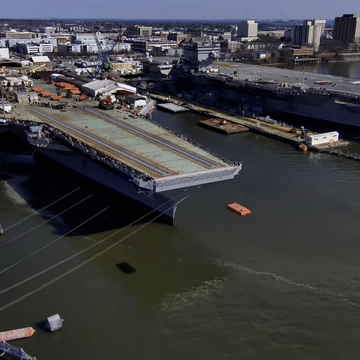
Watch America’s Next Carrier Test Its Catapults
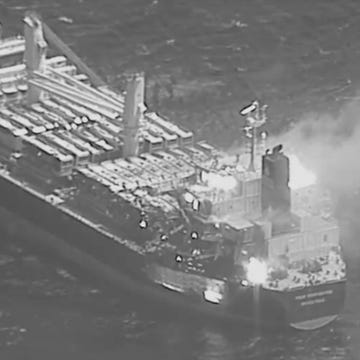
Houthi Missiles Have Drawn Blood
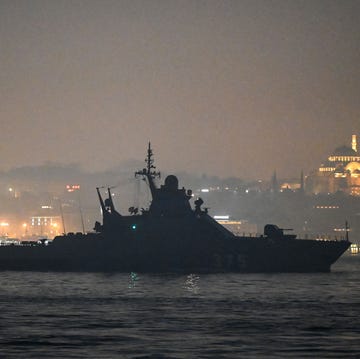
Ukrainian Drone Boats Sink Another Russian Ship
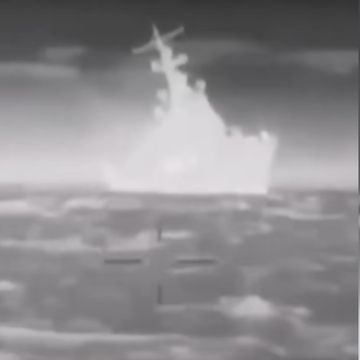
Russian ‘Tarantula’ Missile Corvette Sunk

A Ship-by-Ship Breakdown of America’s Ghost Fleet
The US is buying 9 more attack submarines for $22 billion. This is what it's like on one of the most lethal subs ever built.
- The US Navy's $22.2 billion contract for 9 Virginia-class attack submarines is the largest shipbuilding contract in the service's history.
- In 2018, the Navy commissioned the nuclear-powered USS Indiana (SSN 789), a Block III submarine in the Virginia-class. Check out the images below to see what it's like aboard the Indiana.
- Visit Business Insider's homepage for more stories .

The US Navy awarded a contract to General Dynamics Electric Boat to build its Block V Virginia-class submarines, Navy Times reported Monday. The contract to build nine boats is worth $22.2 billion, the largest-ever shipbuilding contract awarded by the Navy.
Block V subs are just the latest group of the Virginia-class subs, and all but one will triple the Tomahawk missile load of other ships in the fleet with the Virginia Payload Module.
While it'll be years before the Block V ships set sail, the US Navy commissioned one Block III Virginia-class in February, the USS South Dakota (SSN 790) and is set to commission another next year, the USS Delaware (SSN 791).
In 2018, the Navy commissioned the nuclear-powered USS Indiana (SSN 789), the fourth Navy vessel named after the state of Indiana and the Navy's sixteenth Virginia-class submarine, entered service on September 29, 2018, at a commissioning ceremony in Port Canaveral, Florida.
"Indiana is a flexible, multi-mission platform designed to carry out the seven core competencies of the submarine force: anti-submarine warfare, anti-surface warfare, delivery of Special Operations Forces (SOF) , strike warfare, irregular warfare, intelligence, surveillance and reconnaissance, and mine warfare," the Navy said in a press statement.
Check it out below.
(Some of the following photos have already been released, but Business Insider was able to get a few unpublished photos of the torpedo room and more from Submarine Force Atlantic.)
The Indiana is the sixteenth commissioned Virginia-class fast attack submarine, and the sixth commissioned Virginia-class Block III submarine.
Virginia-class submarines are developed in blocks, with each block having slightly different specifications than other blocks.
The Indiana is 377 feet long, 34 feet wide, about 7,800 tons when submerged, and has a 140-person crew. It also has a top speed of about 28 mph.
Source: US Navy
Here's a shot of the bow, and the two large-diameter Virginia Payload Tubes. Each tube can launch six Tomahawk cruise missiles.
Here's mission control, which was purposely blurred as the room is highly classified. The sonar monitors are along the top right, while the fire control monitors are to the left (not shown), and navigation is in back.
Here's a close-up of the navigation computer.
One of the newest features on Virginia-class submarines are advanced periscopes, which are called photonics mast. They can be pulled up on any monitor in the submarine, and on the Indiana, are operated by XBOX controllers.
And here's the helm, which is also blurred because of the classified nature of mission control.
This is the office of the chief of the boat, the top enlisted on a submarine. The countermeasure launcher is in the background with red tags.
This is the torpedo room. The Indiana is armed with 2,000-pound Mark 48 Advanced Capability torpedoes, which can travel at more than 50 mph on their way to targets. These are some of the most fearsome torpedoes in the world.
Here's a close-up of the launcher.
You can watch sailors load one of the torpedoes in the video below (starting about minute three).
Some of the enlisted submariners have their bunks in the torpedo room..
A stateroom like this one, which is occupied by officers, offers more privacy than other berthing areas.
And here's the chow hall, the largest open space in the ship.
Finally, watch the Indiana in motion below.
Daniel Brown wrote an earlier version of this article.
- Main content

U.S. Navy To Get New Unique Submarine: Virginia SSW
The uss jimmy carter is widely regarded as the most secretive submarine in the u.s. navy. it is especially equipped for seabed warfare, unreported missions deep below the waves. now a new seabed warfare submarine, using a virginia class hull, is planned..
H I Sutton 20 Apr 2023
The USS Jimmy Carter is currently the U.S. Navy’s principal seabed warfare submarine, specially fitted for covert spy missions deep beneath the waves. Now plans are underway to build a follow on special spy submarine using the newer Virginia Class hull.
A single Mod VA SSW (Modified Virginia, Subsea and Seabed Warfare) version of the Virginia Class is expected to be built.
Work is already underway at the famous Electric Boat shipyard in Groton, Connecticut. A basic outline of the design was shared by General Dynamics Electric Boat’s President, Kevin Graney, in a January 2022 at a Connecticut Economic Summit in 2022. Since then some information about the SSW design has slowly emerged in open sources, but naturally the details remain cloaked. According to the Congressional Research Service, a single boat will be procured in the U.S. Navy’s 2024 budget . The calculated cost is $5.1 billion, almost a billion more than the baseline Virginia Class.
Seabed Warfare
Seabed warfare has been brought into sharp focus by Russia’s ongoing efforts to map undersea infrastructure. And by the September 2022 with the attack on the Nord Stream gas pipelines in the Baltic. There is no suggestion that the USS Jimmy Carter was involved in the Nord Stream incident (it wasn’t!). But the attack shows the relevance of these capabilities. Most seabed warfare however is closer to espionage than sabotage. And the American submarines excel.
The history of operations against undersea infrastructure, such as sensor networks, communications and energy infrastructure goes back a long way. And both the U.S. Navy and Russian Navy have strong traditions.
In the 1970s Operation Ivy Bells saw the U.S. Navy tapping Soviet communications networks deep undersea. Tapping the cables which the Soviets thought were safe gave the U.S. valuable insight and intelligence. The first tap, in the Sea of Okhotsk was followed by several others of similar significance but less fame. The USSR only found out about them when a Soviet spy deep in the American intelligence apparatus, Ronald Pelton, betrayed them.
At first the U.S. Navy used a converted cruise missile submarine, USS Halibut . This was followed by USS Seawolf and then USS Parche , both of which were upgraded with extended hulls to carry the specialist equipment. Then in the 2000s one of the new Seawolf class submarines, USS Jimmy Carter , was built with the hull extension already fitted. This submarine becoming the premiere seabed warfare boat of the U.S. Navy. The new specialized Virginia class submarine will augment or succeed USS Jimmy Carter .
The Virginia SSW Submarine Design
Extract details of the new Virginia SSW submarine are, as we should expect, unclear. Even the USS Jimmy Carter which has been in service almost 20 years remains something of a mystery. However we can expect the new submarine to carry specialist uncrewed underwater vehicles (UUVs), remote operated vehicles (ROVs) and special operations submersibles.
Some of the vertical launch systems for missiles, known as VPMs (Virginia Payload Modules) will be repurposed for new systems. Additionally the keel beneath them will be extended. Exactly how this will interface with specialist submersibles can only be speculated at.
Russia too has a long tradition of seabed warfare. And relative to even the U.S. Navy, is heavily invested in this area. The largest submarines in service anywhere in the world are Russia’s fleet of specialist submarines. The U.S. Navy’s seabed warfare capability is likely more sophisticated, but Russia’s is broader and more plentiful.
So if the U.S. Navy wishes to retain any advantage it has, it is natural that it would look to have a successor to the USS Jimmy Carter .
Related Articles
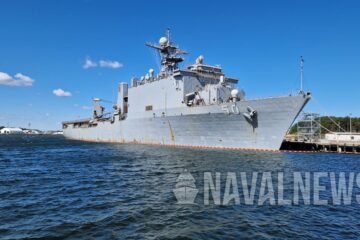
U.S. Navy awards BAE Systems contract to upgrade USS Carter Hall

RAND: What Does the U.S. Navy Need in its Future Combatants?
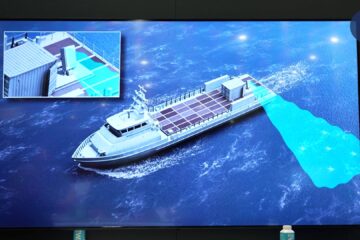

U.S. Navy to Test Epirus’ Drone-disabling HPM Technology Against Seaborne Attack Vessels

Submarine Industrial Base Council
About the us submarine programs, virginia class ssn.

The Virginia Class is the latest class of advanced capability nuclear powered fast attack submarines (SSN). It helps ensure our future national security by providing theater commanders with an affordable and flexible multi-mission stealth platform that replaces the aging fleet of Los Angeles Class attack submarines. Specifically designed for the post-Cold War threat environment, the Virginia Class is tailored to excel in a wide range of warfighting missions.
The Virginia Class has several innovations that significantly enhance its warfighting capabilities with an emphasis on littoral operations. Virginia Class SSNs have a fly-by-wire ship control system that provides improved shallow-water ship handling. The class has special features to support special operation forces. The torpedo room can be reconfigured to house a large number of special operation forces and all their equipment for prolonged deployments and future off-board payloads. The class also has large lock-in / lock-out chamber for divers. In Virginia Class SSNs, traditional periscopes have been supplanted by two Photonics Masts that house color, high-resolution black and white, and infrared digital cameras atop telescoping arms. With the removal of the barrel periscopes, the ship’s control room has been moved down one deck and away from the hull’s curvature, affording it more room and an improved layout that provides the commanding officer with enhanced situational awareness. Additionally, through the extensive use of modular construction, open architecture, and commercial off-the-shelf components, the Virginia Class is designed to remain state of the practice for its entire operational life through the rapid introduction of new systems and payloads.
Together, the shipbuilders, industry suppliers and the Navy consistently deliver Virginia Class submarines under budget and ahead of schedule.
Virginia Class Design Evolution
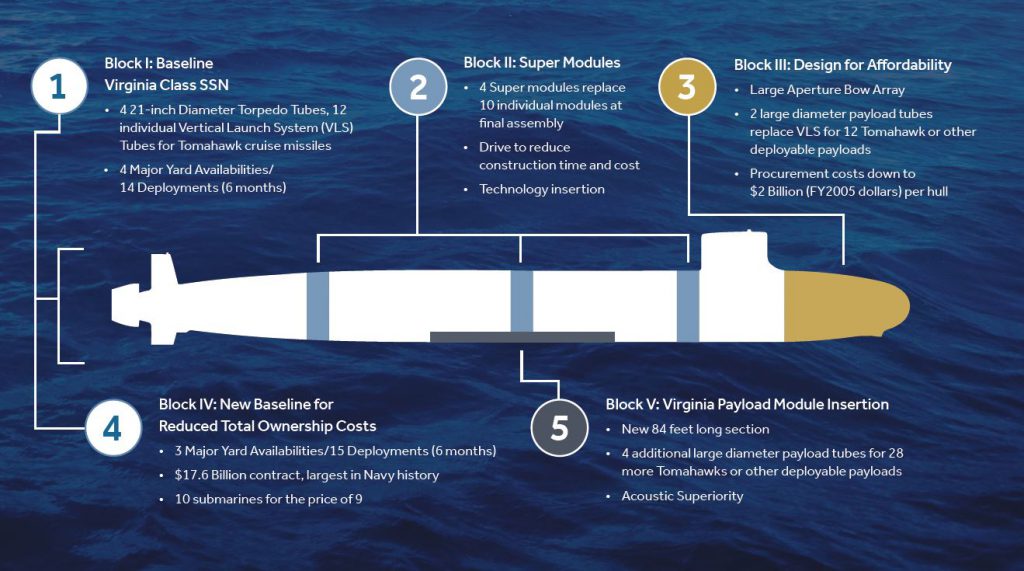
The Virginia Class submarine design has continued to evolve since USS Virginia (SSN 774) was first commissioned in 2004. Each successive Virginia Class SSN Block incorporates additional capabilities and advanced technology while reducing costs. Like the last of the preceding Los Angeles-class attack submarines, the first two blocks of Virginia Class have a vertical launch system (VLS) in the bow for 12 Tomahawk missiles. Starting with Virginia Class Block III, two key design changes were made:
- The VLS in the bow was replaced by two large diameter payload tubes utilizing the same “multiple all-up-round canister” (MAC) concept as the Ohio Class guided missile submarine (SSGN) . Each payload tube can carry six (6) Tomahawk missiles.
- The traditional sonar sphere was replaced by the Large Aperture Bow array
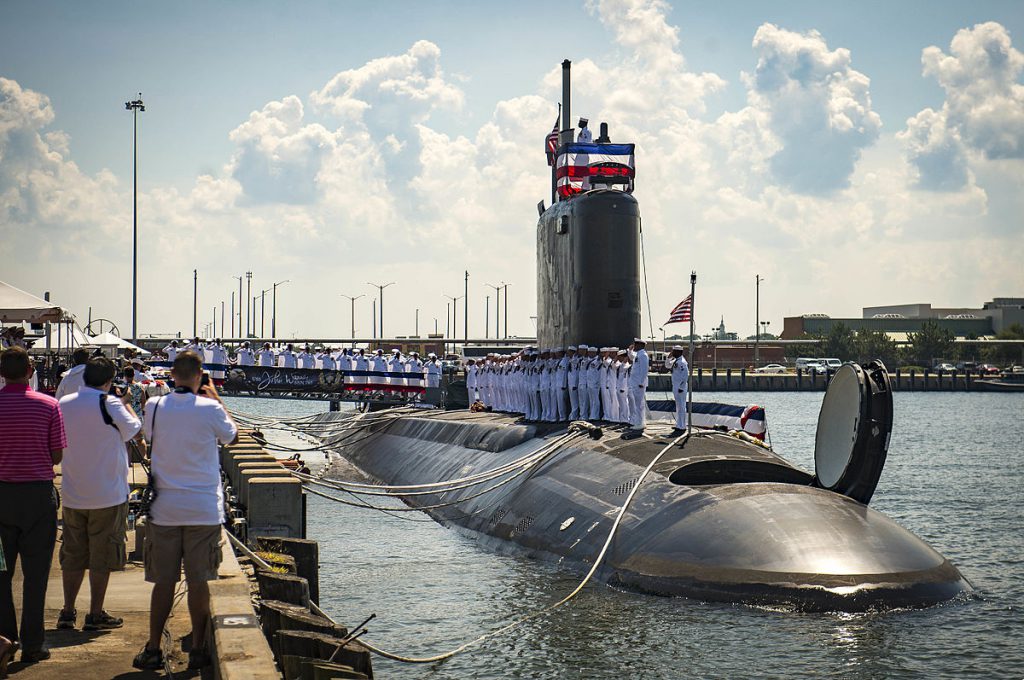
About 40% of the original Virginia Class bow was redesigned for Virginia Class Block III. This design investment reduced the overall procurement costs and permitted the construction of two Virginia-class attack submarines per year beginning in 2011.

The Virginia Payload Module (VPM) represents the next major design change to the Virginia Class starting with Block V. The VPM is a new 84 foot section inserted into the existing submarine design that contains an additional four (4) large diameter payload tubes, similar to the bow payload tubes added in Block III. Unlike the bow payload tubes, the VPM payload tubes can each carry seven (7) Tomahawk missiles. Future VPM equipped submarines are the most cost effective way to restore the Navy’s undersea strike capacity, which will drop by 60% as the Ohio Class SSGN force will be retired by 2028. The first VPM equipped submarine will begin construction in 2019.
VPM’s open architecture design enables the submarine to deliver a large variety of capabilities including weapons, unmanned systems including Large Displacement Unmanned Undersea Vehicles, seabed sensors and other undersea capabilities.
As the threats to national security around the world continue to change and evolve, the submarine industrial base will continue to deliver a submarine that allows the Navy to meet these challenges.
CRUISING TODAY AT 2PM - SEE YOU ON BOARD!
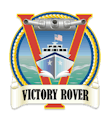
First widely used in World War I for their stealth capabilities, submarines today play a major role in nearly every Navy. Their uses range from simple surveillance to seek and destroy missions, all the way up to nuclear deterrence.
Los Angeles Class aka 688 class-The Los Angeles Class submarines are fast attack subs equipped with Mk 48 torpedoes, Tomahawk land attack missiles, Harpoon anti-ship missiles, Mk60, and Mk67 Captor mines. Using a nuclear reactor, two turbines, one auxiliary motor, and one shaft, the Los Angeles class submarine can reach speeds of 20 knots while surfaced and 33 knots while submerged. 41 of these submarines are currently still in commission, and they are stationed in Pearl Harbor Hawaii, Groton Connecticut, San Diego California, Guam, and Portsmouth New Hampshire.
Virginia Class are the newest subs in the fleet, and they will eventually replace the older Los Angeles Class submarines. These newer submarines are expected to remain in service until 2060, and are outfitted with Mk 48 torpedoes, Harpoon missiles, new advanced mobile mines, and acoustic device countermeasures.
- Chevron down Submarines Stationed in Norfolk:
- USS Newport News (SSN 750), Commissioned June 3, 1989
- USS Albany (SSN-753), Commissioned April 7, 1990
- USS Boise (SSN-764), Commissioned November 7, 1992
- USS Helena (SSN-725), Commissioned July 11, 1987
- USS Pasadena (SSN-752), Commissioned February 11, 1989
- USS New Hampshire (SSN-778), Commissioned October 25, 2008
- USS John Warner (SSN-785), Commissioned Augst 1, 2015
- USS Washington (SSN-787), Commissioned October 7, 2017
- USS New Mexico (SSN-779), Commissioned March 27, 2010

Los Angeles Class Submarine outbound off Norfolk Naval Station
- Books & Press
- Proceedings
- Naval History

Suggestions
Trending topics, senate panel questions navy submarine build rate, fy2025 virgina-class buy.
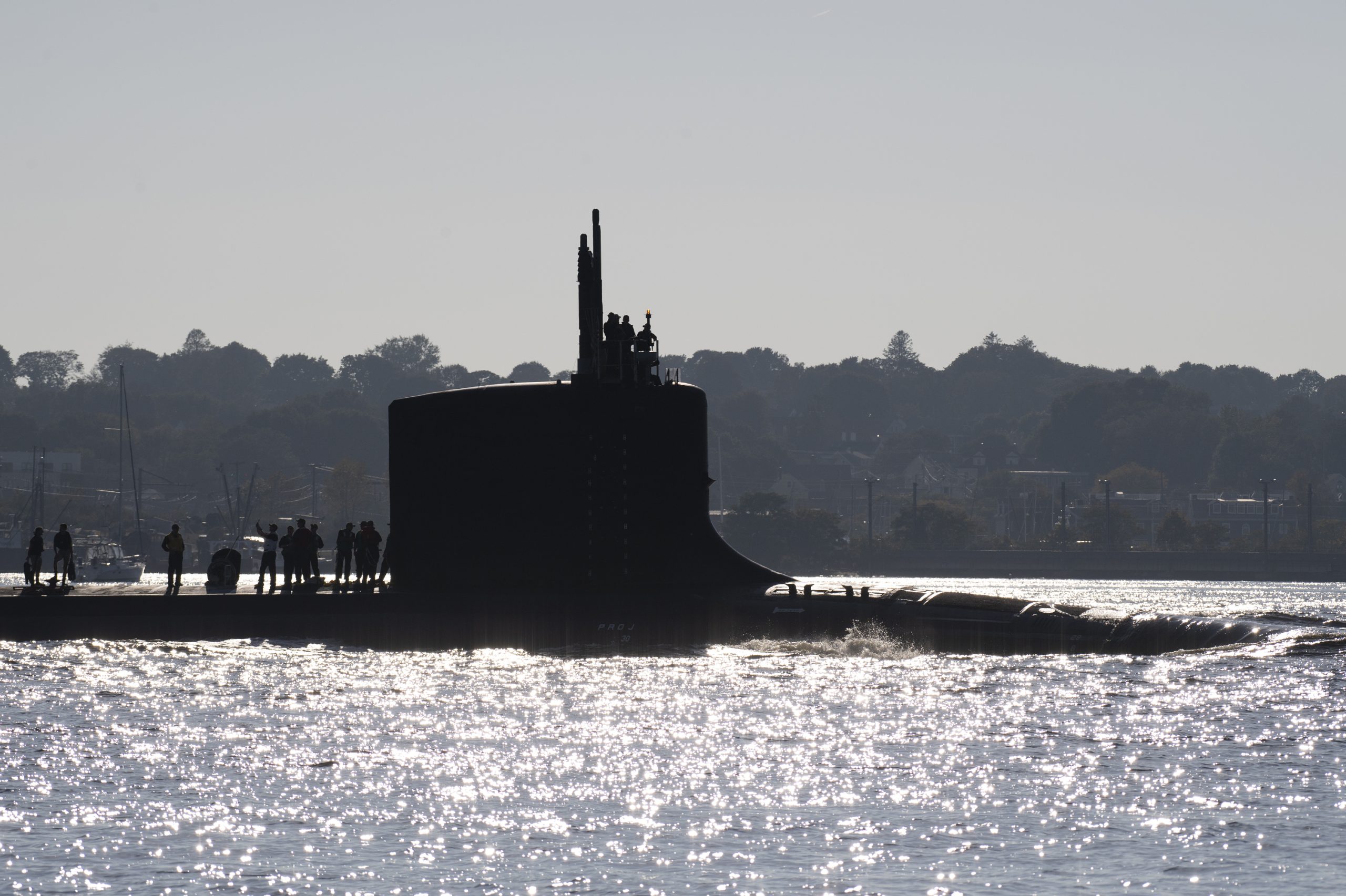
The Senate Armed Services seapower subcommittee chair said the Navy needed to “run fast” to catch up on delays to the Columbia-class ballistic missile submarine program and also meet the U.S. commitment of delivering at least three Virginia-class submarines in the 2030s to Australia.
During a hearing on Wednesday, Sen. Tim Kaine (D-Va.) questioned Navy leaders how the service would make up the schedule shortfalls of the Columbia and Virginia programs while only requesting one Virginia-class submarine in the Fiscal Year 2025 budget.
Nickolas Guertin, assistant secretary for research, development and acquisition, testified the Navy would reach its goal of receiving two Virginia-class submarines and a Columbia class per year by 2028 and 2.3 Virginia-class boats per year by 2032 if 10,000 more skilled tradesmen, engineers and logisticians were put in place.
He added that even though the request was for one Virginia-class submarine this year, there were calls in the Fiscal Year 2025 budget for long-lead items for others to be built in the future.
“We can’t delay this anymore,” Sen. Richard Blumenthal (D-Conn.) said, referring to national security requirements to modernize the nuclear triad and Washington’s commitment to the Australia-United Kingdom-United States [AUKUS] agreement on submarine production and high-technology exchanges. He also noted the delays affect not only General Dynamics Electric Boat and HII’s Newport News Shipbuilding but also suppliers to the two shipyards and their employees.
Guertin said the problem of having a skilled workforce in place “at the waterfront,” in engineering, logistics and with the suppliers “is pervasive and broad.” He added there has been some improvement in hiring numbers thanks to government and industry incentives.
At least one senator noted television ads during the NCAA men’s basketball tournament pointing to careers in shipbuilding as an example of reaching out to a broader population who may be interested in a well-paying career.
In answer to an earlier question, Guertin said the loss of skilled welders, pipefitters and electricians following the COVID-19 pandemic led to “a greener workforce” in which “quality wasn’t as high” and manufacturing was slower. He added the funds the Navy has committed to help train these workers and improve shipyard capacity has to be “met by industry.”
The trick will be getting the new workers past the three-year employment mark, once they have the skills needed and are willing to continue working in shipbuilding and maintenance, Guertin said.
By “staying behind schedule, they’re not making a profit.”
Guertin said the recent addition of $3.3 billion as part of a supplemental spending bill for the submarine industrial base is paying off in yard modernization and a growing workforce.
Guertin told the committee the Navy has encouraged the shipyards to spread out their manufacturing base to inland states such as Michigan to build ships’ decks or to assemble modules that could be fitted onto hulls being built on the coasts.
Spreading the work out to skilled labor forces away from the concentrated maritime industries along the coasts could be another way to reduce delays in new ship delivery, he added.
On the three-year delays in frigate construction at Fincantieri’s Marinette Marine Wisconsin yard, Guertin said, “we could have kept a better eye on this ship.” In response to the situation there, “we have moved hard into that problem … to get into a better place.”
USNI News reported Naval Sea Systems Command has sent teams to work with the yard and its subcontractors on the Constellation-class design, which is expected to be completed by October or possibly December.
Guertin and Vice Adm. James Pitts, vice chief for warfighting and capabilities (OPNAV N9), told the panel other steps to improve ship delivery and reduce repair time could start with Del Toro’s call for a national maritime statecraft strategy involving the Navy, the Departments of Transportation and Commerce and shipbuilders to build capacity for construction and repair.
“That would be a good place to start,” Guertin added.
Sen. Angus King (I-Maine) took the Navy to task for cutting its request for directed-energy research and development from $181 million to $55 million, which he said made no sense. “Budgets are policy,” he said when Guertin mentioned experiments the Navy was making in the field.

John Grady, a former managing editor of Navy Times, retired as director of communications for the Association of the United States Army. His reporting on national defense and national security has appeared on Breaking Defense, GovExec.com, NextGov.com, DefenseOne.com, Government Executive and USNI News.
Get USNI News updates delivered to your inbox
Email address:
Frequency Daily Weekly All
Related Topics
- News & Analysis
- Submarine Forces
Related Posts
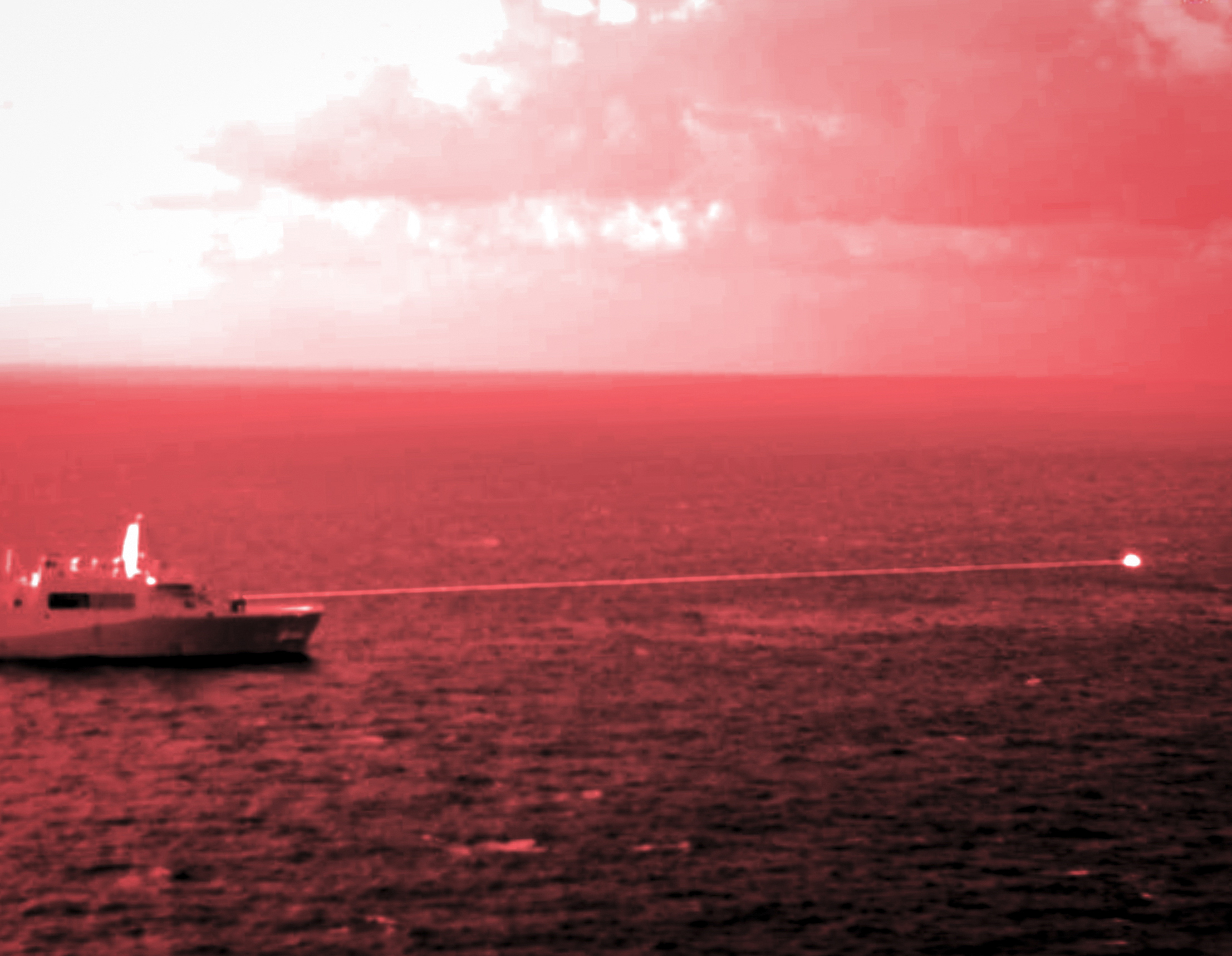
HASC’s Adam Smith Says Pentagon Must Assess Platform Capability for Modernization Efforts

Report to Congress on Economic Effects of Red Sea Disruptions
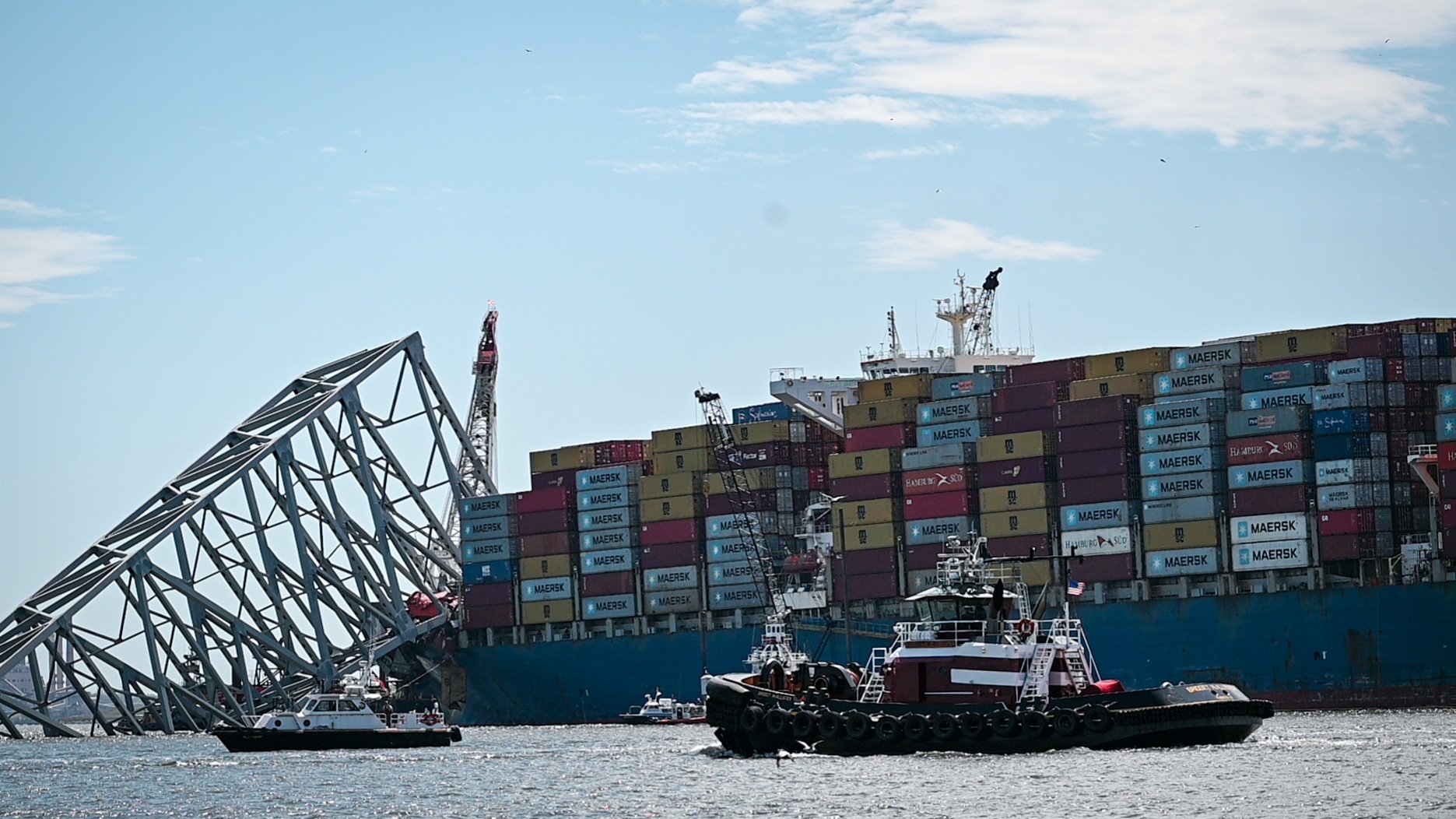
Baltimore Bridge Collapse: Frequently Asked Questions
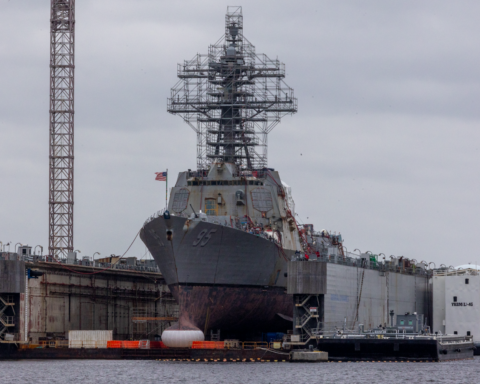
GAO Tells Senate Panel U.S. Shipyards Are Major Readiness Concern

Congressional Delegation Advocates for Dual Virginia-class Submarine Funding Amid National Security Concerns
I n the face of a Navy budget proposal that endangers the two-per-year build rate of Virginia-class submarines, a bipartisan group of over 100 US lawmakers has taken a firm stance to maintain a robust and consistent production schedule essential for both national security and industrial stability. The Navy’s FY25 budget request for a single Virginia-class submarine contradicts the established practice since 2011 and the Department of Defense’s National Defense Industrial Strategy, a point of contention that has drawn critical attention from both sides of the aisle.
Representatives Joe Courtney, a Democrat from Connecticut, and Trent Kelly, a Republican from Mississippi, have spearheaded a collective effort to advocate for the funding of two Virginia-class submarines. Their campaign is deeply rooted in a recognition of the strategic necessity to sustain and advance America’s undersea warfare capabilities in an era of increasing global competition. The duo, who occupy leading positions on the House Armed Services Seapower and Projection Forces Subcommittee, have amplified their voices in conjunction with 118 other lawmakers in a letter urging House appropriators to adhere to the two-sub cadence.
The letter sent to Congress underscores the lawmakers’ unease with the proposed reduction and highlights the ramifications it may have on the industrial base. “Sustainable production of the Virginia-class program, and the development of a follow-on attack submarine program, is key to maintaining our undersea advantage in the years ahead,” the letter asserts, reflecting the lawmakers’ united viewpoint.
The Navy’s budget choice, driven by program status rather than the Fiscal Responsibility Act of 2023’s spending constraints, has been met with skepticism on Capitol Hill. “But in my opinion, the Navy is looking backwards, not forwards, in terms of what’s actually happening in the shipyards with this proposal,” opined Representative Courtney, demonstrating a disconnect between Congressional perspectives and Navy justifications.
The lawmakers’ push aligns with the industry’s concerns. Phebe Novakovic, the chief executive of General Dynamics, the Navy’s prime contractor for submarines, has warned that the cutback may not immediately impact her company but could hold implications in the long term. Novakovic emphasized the importance of maintaining a steady supply chain for the health of the submarine industrial base, adding, “We have long-lead material on Virginia that is very important to the supply chain.”
Electric Boat, an influential player in submarine construction with facilities in Groton, Connecticut, and Quonset Point, Rhode Island, does not plan to alter its hiring goals despite the proposed budget changes. This signals an industry prepared to meet growing production demands over the next decade. The workforce is a key element, as highlighted by Nickolas Guertin, the assistant secretary of the Navy for research, development, and acquisition, who indicated the need to add 10,000 workers to support Virginia and Columbia-class submarine demands.
Relevant articles:
– More than 100 lawmakers call for appropriators to restore Navy’s second Virginia-class sub , Breaking Defense, 05/01/2024
– Joe Courtney pushes to restore Electric Boat submarine build rate , The Connecticut Mirror, 05/01/2024
– House lawmakers denounce Pentagon’s planned drop in submarine orders , NavyTimes.com, 05/01/2024
![In the face of a Navy budget proposal that endangers th […] In the face of a Navy budget proposal that endangers th […]](https://img-s-msn-com.akamaized.net/tenant/amp/entityid/BB1jyAVX.img?w=768&h=512&m=6)
- Air Warfare
- Cyber (Opens in new window)
- C4ISR (Opens in new window)
- Training & Sim
- Asia Pacific
- Mideast Africa
- The Americas
- Top 100 Companies
- Defense News Weekly
- Money Minute
- Whitepapers & eBooks (Opens in new window)
- DSDs & SMRs (Opens in new window)
- Webcasts (Opens in new window)
- Events (Opens in new window)
- Newsletters (Opens in new window)
- Events Calendar
- Early Bird Brief
- Digital Edition (Opens in new window)
What has the AUKUS alliance accomplished in the last year?
This is the second story of a two-part series on how the U.S. submarine force is participating in the trilateral AUKUS alliance. Click here to read the first story.
Australia won’t take possession of its first nuclear-powered submarine until 2032 , but Australia and the United States are already training the officers and sailors who will operate that Virginia-class attack boat and the civilians who will maintain it.
“We have eight and a half years to create an Australian [commanding officer] that normally takes 16″ years, said Dan Packer, the director of naval submarine forces for AUKUS.
Given the stakes — the U.S. selling a nuclear-powered boat to another country for the first time, and Australia making its first foray into using nuclear power — Packer said it’s important not to rush the officers’ training and development. It must move forward deliberately, with little down time between at-sea assignments, he noted.
Australia has eight officers in the inaugural training cohort that began in 2023. Three of those eight will be moved into an accelerated training pipeline, and one will eventually be the first Australian Virginia-class commanding officer — though the navies don’t yet want to decide who that will be, Packer said during an April 4 embark aboard the Virginia-class sub Delaware.
“They’re going to finish the pipeline this year. And then they’re going to go to their first boat for a two-year tour,” he said. Next, “we’re going to take them back to Groton, [Connecticut], to go back to department head school, and then they’re going to go right back to another boat. Normally, people do a sea/shore rotation,” but shore tours have been largely eliminated from the accelerated training pipeline.
These three officers will then do a two-year tour in Australia, attend the Australian and American command courses — and then, in 2032, one will be the commanding officer of the submarine that will sail from the U.S. to Australia, lower its American flag, raise an Australian flag and become the lead ship in a sovereign Australian nuclear-powered fleet.
“Right now, the Australian submarine force is about 800 people. We’re going to build it to 3,000,” Packer said. “We understand exactly how many people we need to ingest [into the American training pipeline]. This year, we’re going to ingest 17 officers, 37 nuclear enlisted and 50 non-nuclear enlisted. And we’re going to up that number every year.”
Packer said the impressive part of this training plan isn’t its quantity. It’s the fact that these sailors and officers will be fully integrated into American attack submarine crews until such time that Australia can stand up its own training pipeline at home.
At some point, he said, the U.S. Navy will have 440 Australians on 25 attack submarines, with each crew including two or three Australian officers, seven nuclear enlisted and nine non-nuclear enlisted sailors.
“This is something that has never happened before,” he said. “We are completely, 100% integrating them into our crew, from a complete and utter perspective. They will do everything that we do” while operating aboard the subs.
President Joe Biden, right, greets British Prime Minister Rishi Sunak, center, and Australian Prime Minister Anthony Albanese at the AUKUS meeting in San Diego, Calif., on March 13, 2023. (Chad McNeeley/U.S. Defense Department)
Short-term wins in a long-term effort
Training the uniformed personnel is just one piece of a flurry of industrial, legislative and acquisition activity that’s taken place since the AUKUS three-phase plan was laid out in March 2023.
Leaders cautioned patience during a recent panel discussion , saying that three countries with separate legislative and budgetary processes were all trying to work in parallel to lay the foundation for a successful trilateral submarine alliance.
“It’s very easy to get dragged down to the short term. But these are long-term goals,” U.K. Royal Navy Second Sea Lord Vice Adm. Martin Connell said.
He added that the upcoming AUKUS milestones can’t wait until all the money and authorities are in place; “we’ve got to move sensibly” and accomplish anything that can be done now, while the rest moves through legislative bodies and budgetary processes.
For example, in industry, “you can see components that are going to go into SSN-AUKUS” in the late 2030s, he said, referring to the attack submarine design both the U.K. and Australia will build .
Australian Defence Industry Minister Pat Conroy added during the panel that his country already committed to spend AU$4.7 billion (U.S. $3.1 billion) to reduce the backlog at Rolls-Royce’s factory, which builds nuclear power plants.
“When people get frustrated, I say there are already parts being produced now for a submarine that won’t be in the water [until] 2042. And I think the budget and the wills of the governments are there; we’ve just got to, in a steady and methodical way, deliver on them,” he said.
Sailors assigned to the Australian Collins-class submarine HMAS Sheean prepare to receive hotel services and supplies during a bilateral training event Sept. 13, 2019, near Fremantle, Australia. (MC2 Jordyn Diomede/U.S. Navy)
There are several more items that were accomplished in the past year:
- In December, the U.S. and Australia finalized a Foreign Military Sales case to procure submarine training devices, including simulators, to support the 2027 establishment of Submarine Rotational Force-West in Australia’s HMAS Stirling base. According to an April joint statement , the first trainers were put on contract in April. The systems will support American sailors assigned to the rotational force and Australian sailors learning to operate the Virginia-class boats ahead of the 2032 sale.
- The U.S. Congress passed several vital measures in the fiscal 2024 National Defense Authorization Act, including the AUKUS Submarine Transfer Authorization Act allowing the sale of boats to Australia. Australia, too, took some important legislative steps: The Australian Naval Nuclear Power Safety Bill 2023 and Australian Naval Nuclear Power Safety (Transitional Provisions) Bill 2023 were introduced to the Australian Parliament in November but have not yet been passed.
- In March, the first group of 20 Australian industry personnel completed a three-month training placement at Pearl Harbor Naval Shipyard and Intermediate Maintenance Facility in Hawaii.
- In January, 37 Australian sailors reported to American submarine tender Emory S. Land in Guam to prepare for the ship’s deployment to HMAS Stirling — where this summer it will conduct a first maintenance availability on an American sub with a combined American and Australian maintenance team.
- Even though U.S. President Joe Biden gave the order to sell nuclear-powered submarines to Australia, there’s still been some heartburn about second-order effects, Packer said, including the need to give Australia the accompanying “cryptographic equipment or electronic warfare libraries or targeting data or even bathymetry .” Packer and his team have been working with other government agencies to pave the way to share these sensitive items and information with Australia, such that they can fully use the submarines they’ll buy and receive next decade.
Megan Eckstein is the naval warfare reporter at Defense News. She has covered military news since 2009, with a focus on U.S. Navy and Marine Corps operations, acquisition programs and budgets. She has reported from four geographic fleets and is happiest when she’s filing stories from a ship. Megan is a University of Maryland alumna.
More In Naval
Former CYBERCOM boss Nakasone to lead Vanderbilt defense institute
The move follows a yearslong stint overseeing elite military hackers and global intelligence collection..
Capella Space automates vessel classification in satellite imagery
“there might be a lot of different locations you’d be monitoring that you’re not really interested in — until a warship shows up.”.
Biden says US won’t supply weapons for Israel to attack Rafah
U.s. will still supply iron dome rocket interceptors and other defensive arms..
NATO drone surveillance hours surge amid growing appetite for intel
“the north atlantic security environment is under threat,” said scott bray, the assistant secretary general for intelligence and security..
Pentagon innovation chief calls for bigger, faster Replicator 2.0
Defense innovation unit head doug beck outlined his goals for the next version of the drone program, even while the first is a work in progress., featured video, with insurgents pouring over a wall in afghanistan, this sgt. took them on with only his pistol.
New thermal optics and more at Modern Day Marine 2024 | Defense News Weekly Full Episode 5.4.24
How can I start prepping for upcoming school year expenses? — Money Minute
Thermal / red dot combo on display at Modern Day Marine
Trending now, special operators set to pick light machine gun in new caliber, confusion swirls over western tank caveats in ukraine, us navy’s submarine fleet is too small. here’s how selling some may help., seals want loitering munitions aboard insert/extract patrol boats, submarine delays push seals to find new underwater approaches.

COMMENTS
Sailors assigned to the Virginia-class fast-attack submarine USS New Mexico (SSN 779) conduct a virtual tour of the boat as part of Santa Fe Virtual Navy Wee...
The Virginia class, or the SSN-774 class, is the newest class of nuclear-powered cruise missile fast attack submarines in service with the United States Navy.The class is designed for a broad spectrum of open-ocean and littoral missions, including anti-submarine warfare and intelligence gathering operations. They are scheduled to replace older Los Angeles-class submarines, many of which have ...
The Virginia-class is a new group of nuclear-powered cruise missile fast-attack submarines. It is scheduled to replace older Los Angeles-class submarines in ...
The best comparison is between the Virginia class and the Yasen M class, Russia's most advanced attack submarine. The 13,800-ton Yasen-M "is the crown jewel of the contemporary Russian Navy ...
The Ultimate Underwater Warrior: Exploring the Virginia Class Submarine" - This video takes a deep dive into the cutting-edge technology and capabilities of ...
Exclusive: Inside the nuclear-powered submarine at the centre of the controversial AUKUS deal. At first, the sight of a 115-metre, eight million kilogram nuclear-powered submarine being swallowed by the Pacific Ocean is exhilarating. Like a whale breaching, this steel monster, powered by a nuclear reactor and loaded to the hilt with deadly ...
GROTON, Conn. (October 14, 2023) - USS Hyman G. Rickover (SSN 795) is moored pierside during a commissioning ceremony at Naval Submarine Base New London in Groton, Connecticut on October 14, 2023. SSN 795, the second U.S. Navy submarine to commemorate the "father of the nuclear Navy" Adm. Hyman G. Rickover, operates under Submarine ...
Each Virginia-class submarine is 377 feet long with a beam of 34 feet and displaces 7,900 tons. The sub includes four 533mm torpedo tubes for launching Mk.48 anti-surface and anti-submarine torpedoes.
USS Virginia (SSN 774) is a Virginia-class attack submarine. The Virginia-class, also known as the VA-class or 774-class, is a class of nuclear-powered fast attack submarines in service with the U.S. Navy. The submarines are designed for a broad spectrum of open-ocean and littoral missions. They were conceived as a less expensive alternative to ...
USS Indiana (SSN 789) is a Virginia-class attack submarine. The Virginia-class, also known as the VA-class or 774-class, is a class of nuclear-powered fast attack submarines in service with the U.S. Navy. The submarines are designed for a broad spectrum of open-ocean and littoral missions. They were conceived as a less expensive alternative to ...
134 officers and crew [10] USS Indiana (SSN-789) is a nuclear powered United States Navy Virginia -class attack submarine, named for the State of Indiana. She is the sixteenth of her class and sixth of the significantly redesigned Block III, including a revised bow and VLS technology from the Ohio -class of guided missile submarines. [12]
The US is buying 9 more attack submarines for $22 billion. This is what it's like on one of the most lethal subs ever built. The US Navy's $22.2 billion contract for 9 Virginia-class attack ...
H I Sutton 20 Apr 2023. The USS Jimmy Carter is currently the U.S. Navy's principal seabed warfare submarine, specially fitted for covert spy missions deep beneath the waves. Now plans are underway to build a follow on special spy submarine using the newer Virginia Class hull. A single Mod VA SSW (Modified Virginia, Subsea and Seabed Warfare ...
Go behind the scenes and catch a glimpse of some of the Navy's future fast-attack submarines and the shipbuilders who build modern warships at Newport News S...
About. USS Washington (SSN 787) is a Virginia-class attack submarine. The Virginia-class, also known as the VA-class or 774-class, is a class of nuclear-powered fast attack submarines in service with the U.S. Navy. The submarines are designed for a broad spectrum of open-ocean and littoral missions. They were conceived as a less expensive ...
General Characteristics: Virginia Class Builder: General Dynamics Electric Boat and Huntington Ingalls Industries - Newport News Shipbuilding. Propulsion: One nuclear reactor, one shaft Length: 377 feet Beam: 33 feet Displacement: Approximately 7,800 tons submerged Speed: 25+ knots (28+ miles per hour) Crew: 132: 15 officers; 117 enlisted. Armament: Tomahawk missiles and MK48 torpedoes, four ...
The Seawolf-class itself was originally intended to replace the aging Los Angeles-class attack subs. The Virginia-class is another attack submarine. It conducts a variety of missions for the Navy ...
Virginia Class are the newest subs in the fleet, and they will eventually replace the older Los Angeles Class submarines. These newer submarines are expected to remain in service until 2060, and are outfitted with Mk 48 torpedoes, Harpoon missiles, new advanced mobile mines, and acoustic device countermeasures. Submarines Stationed in Norfolk:
Nickolas Guertin, assistant secretary for research, development and acquisition, testified the Navy would reach its goal of receiving two Virginia-class submarines and a Columbia class per year by ...
The Virginia Class Submarine, also known as the SSN-774, is a submarine class of nuclear-powered cruise missile submarines, in service with the US Navy. It i...
The Navy's FY25 budget request for a single Virginia-class submarine contradicts the established practice since 2011 and the Department of Defense's National Defense Industrial Strategy, a ...
The Virginia class is a class of nuclear-powered cruise missile fast-attack submarines, currently in the military service in the United States Navy. Designed...
The Los Angeles-class submarine Annapolis pulls alongside Diamantina Pier in Australia on March 10, 2024. (MC2 Kaitlyn Eads/U.S. Navy) This is the second story of a two-part series on how the U.S ...
Due to high volume of tour requests and current availability, we are only accepting tour requests on a limited basis. Please email [email protected] for more information. For further questions about tours, please contact COMSUBLANT Public Affairs at (757) 836-1650 or at [email protected]. If you have already scheduled a tour, you may find ...
About. USS New Mexico (SSN 779) is a Virginia-class attack submarine. The Virginia-class, also known as the VA-class or 774-class, is a class of nuclear-powered fast attack submarines in service with the U.S. Navy. The submarines are designed for a broad spectrum of open-ocean and littoral missions. They were conceived as a less expensive ...
Part 2: USS New York Tour https://youtu.be/siitNmsXPxkPart 3: USS Cole https://youtu.be/YGQbhV4AYIQSpecial thanks to the United States Navy and Fleet Week Po...
About. USS Texas (SSN 775) is a Virginia-class attack submarine. The Virginia-class, also known as the VA-class or 774-class, is a class of nuclear-powered fast attack submarines in service with the U.S. Navy. The submarines are designed for a broad spectrum of open-ocean and littoral missions. They were conceived as a less expensive ...